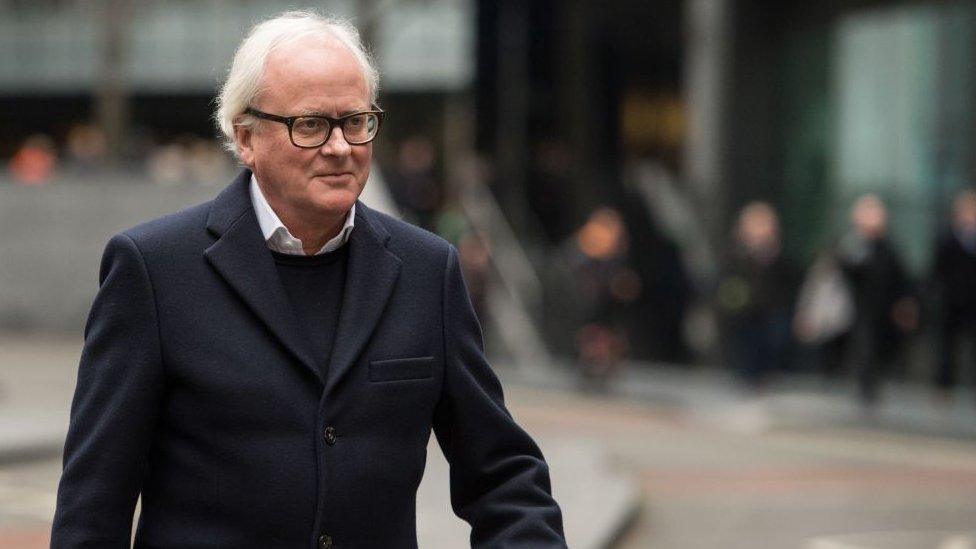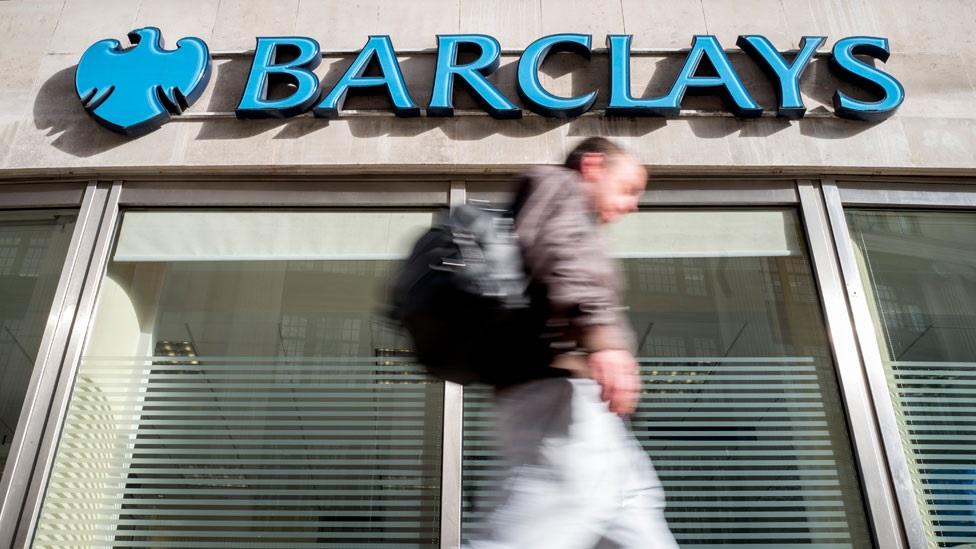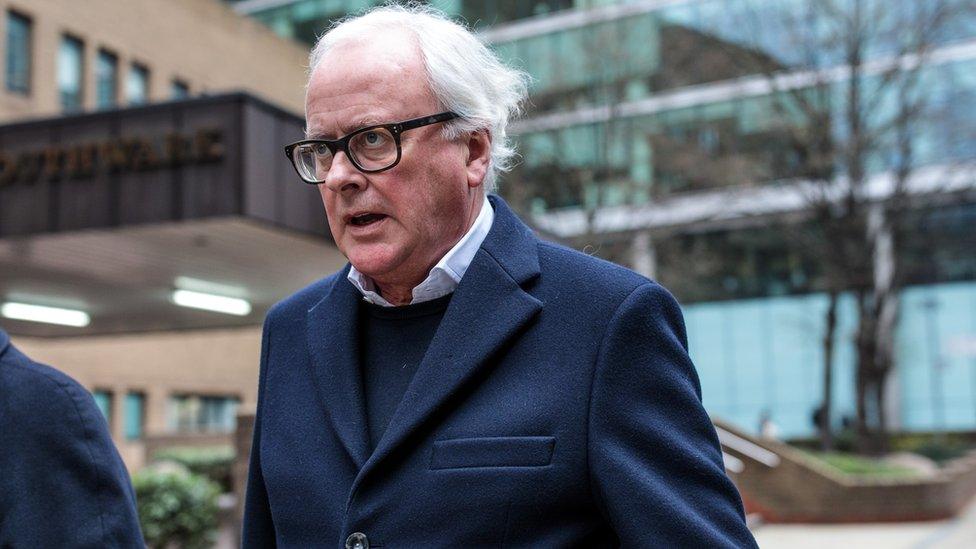Barclays trial: What lies behind the prosecution?
- Published

John Varley was Barclays' chief executive at the time of the financial crisis
The trial of four former Barclays executives starting in January 2019 is a unique legal landmark.
Bank chief executives have been prosecuted before, in Iceland and Ireland, but never in the United States or the United Kingdom. This is the only time in living memory that a chief executive of a global, UK-based bank has been criminally prosecuted.
More importantly, it is the only time in the UK that any senior bank executive has been criminally prosecuted as a result of what happened during the 2008 financial crisis.
That banking crisis, as few will need reminding, required a taxpayer-funded bailout on a vast, unprecedented scale and triggered the worst recession for 80 years, followed by a decade of flagging living standards.
Yet worldwide the executives who ran those banks have almost universally kept, not only their liberty, but their money, their property and their pensions.
Except for the loss of two knighthoods (Fred Goodwin and James Crosby) and one authorisation to work as a director in financial services (Peter Cummings), there has been a conspicuous absence of consequences for those within the financial community who mismanaged the banks with such serious consequences for everyone else.
For all those reasons and more, the decision by the Serious Fraud Office to charge John Varley, Roger Jenkins, Tom Kalaris and Richard Boath with conspiracy to commit fraud, was significant.
The SFO itself was also under threat; in their 2017 election manifesto the Conservative Party pledged to scrap it. But the SFO's decision to charge the Barclays executives, announced on 20 June 2017, a day before the Queen's speech, changed the picture.
The SFO survived, but this case is a crucial test for the agency. Can it pull off the only prosecution of executives for events during the 2008 crash?
Looking back
In 2008, Barclays, like other banks, was running low on cash. The bank deregulation of the late 1990s and the credit and property boom of the early-to-mid noughties had led all banks to lend far more than they ever had before.
The key difference was that the money for that lending was coming, not just from savers and depositors, but also from investors all around the world. As the volume of lending grew, property prices rose and bonuses rolled in.
The bankers took their eyes off their balance sheets - a fact which by 2008 was painfully apparent. For RBS, HBOS and Barclays, what are known as "capital ratios" - the financial safety cushions they kept against the risk of not getting their money back - were looking threadbare.
At its worst, for every £100 the banks had lent, if as little as three or four pounds failed to be repaid, it might be enough to bankrupt them.

After the rescue of Northern Rock in September 2007, the Treasury dug into the figures and put the banks on notice. They had to plump up those safety cushions by raising billions of pounds.
At first, wishing to avoid further Northern Rock-style nationalisations, regulators and government insisted they do so privately.
RBS raised some money on the markets and HBOS tried to do the same, with poor results.
The credit crunch that had been triggered by huge losses on sub-prime mortgages in the United States was in full swing: banks didn't want to lend to each other because they didn't know how much either they or their competitors had lost.
The smart money at the big City institutions didn't want more bank shares.
Fall back plan
In June 2008 Barclays tried to raise £4.5bn from existing shareholders by offering them the right to take up new shares in exchange for contributing more money (known in the City as a "rights issue").
Only 19% did so. Barclays knew it would need a fall-back plan but who would want to invest in beefing up the banks when they looked in such bad shape?
Barclays' answer to that question was the gas-rich Gulf state of Qatar. The Qatar Investment Authority invested £1.8bn and a company representing the ruling family in Qatar, Challenger, pumped in another £533m.

Gordon Brown and Alistair Darling were concerned banks did not have sufficient capital
By early October, it was clear to the Treasury, the Bank of England and the regulators that the private fund-raisings by the banks were not enough.
Following the collapse of Lehman Brothers in September, the whole financial system was in jeopardy.
Prime Minister Gordon Brown and Chancellor of the Exchequer Alistair Darling feared that if they didn't force the banks to beef up their threadbare finances as a matter of urgency, more Northern Rock-style bank runs would follow and cash machines would dry up.
The banking crisis threatened to mutate into a full-blown depression.
Key questions
Part-nationalising the banks by forcing them to take taxpayers' capital in exchange for shares was the government's reluctant but decisive solution.
On the weekend of 11 and 12 October, John Varley was among the bank executives invited to the Treasury for the weekend to work out how many billions of taxpayers' money they would be forced to accept.
But Barclays decided to take a different route, and Mr Varley chose to stay away.
Later that month Barclays announced it had raised more than £7bn from Qatar and Abu Dhabi.
A key question is: was that done legitimately and were shareholders told what they should have been told? At the time of both capital raisings, in June and October, Barclays didn't just raise funds, it also paid money out to Qatari investors.
It paid out about £42m at the time of the capital-raising in June, and a further £280m at the time of the much larger October capital-raising.
Should those fees have been disclosed? Were they simply, as Barclays later said they were, "advisory services agreements" for legitimate services carried out for Barclays?
Or were they effectively bribes, inducements for the Qataris to invest, that Barclays should have made public?
The SFO originally sought to prosecute not only the bank executives, but the banking group itself, the only time a bank as a corporate entity had faced prosecution since the crisis.
However, the judge, Mr Justice Jay, dismissed the case against Barclays corporate. We don't yet know why because his ruling has been kept private.
That, along with the jurors' verdict, is likely to take months to discover.
- Published23 January 2019
